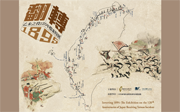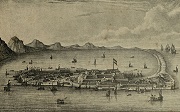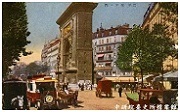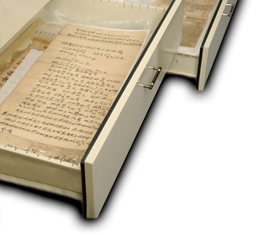
Publication date: Feb 2017
Author: Hsieh Min-ro |Staff member of the Archives of Institute of Taiwan History
2017 marked the 70th anniversary of the February 28 Incident and 30 years since the martial law was lifted. Although the February 28 Incident and the White Terror are not forbidden topics in Taiwan society, many relevant archives are yet to be acquired and disclosed. Since its establishment, the Institute of Taiwan History has striven to collect folk papers, such as the following records related to the February 28 Incident and the White Terror: Historical Materials Related to the February 28 Incident and White Terror, Yang Zhao-jia Collection, Chen Cheng-po Paintings and Papers, Yeh Sheng-ji Papers, Chen Wen-xing Papers, Chen Zhong-tong Papers, The Diary of Lin Xian-tang, and The Diary of Wu Xin-rong.

Author: The Archives of Institute of Taiwan History
Since 16th century, Taiwan has been an important stronghold in a process of competition between western and eastern empire. A develop of Taiwan history interacts with China and world history. In 1894, because of Joseon problems, Qing dynasty and Japan broke out a war, which put Taiwan into a tempestuous and changeful historical trend. When the time went into 1895, several battles happened in our country and familiar locations due to Japanese invasion of Taiwan. Until the Qing Dragon Flag flew away to the Island of Formosa be covered with the Sun flag, people of the Island of Formosa finally became new subjects, who went through double baptism with colonialism and modernization in 50 years.
Publication date: 14 Oct 2015
Author: Huang Hsiang-chi |Staff member of the Archives of Institute of Taiwan History
Taiwan has been an important stronghold in the Pacific Ocean since the Age of Discovery. Tainanfu, Lugang, and Bangkah were three critical commercial port cities that played a crucial role in the trading history of Taiwan. These three cities witnessed Taiwan’s involvement in the international trade zone and symbolized its busy business activities starting in the seventeenth century. This article investigates records created by a Qing official Shen Bao-zhen, the Hsu family enterprise in Lugang, and the Chen family enterprise in Nagasaki to illustrate the rich history of these three port cities.

Publication date: 28 Nov 2013
Author: Ou Yi-han |Staff member of the Archives of Institute of Taiwan History
Lin Xian-tang (1881-1956), one of the figures in Traveling in Time Exhibition, was the leader of the Lin Family from Wufeng, Taichung. On May 15, 1927, he took the Fengshan Ferry from the Keelung Port with his two sons Pan-long and You-long starting to travel around in Europe and America. They spent 378 days visiting ten countries including the United Kingdom, the United States, France, Italy, Germany, Denmark, the Netherlands, Belgium, Spain and Switzerland. In his diary, Lin Xian-tang wrote of what he had seen in his journey and hoped to broaden Taiwanese’s knowledge of Western culture. Now, let’s follow Lin’s steps by reading The Diary of Mr. Guan-yuan in 1927 to visit Europe!




